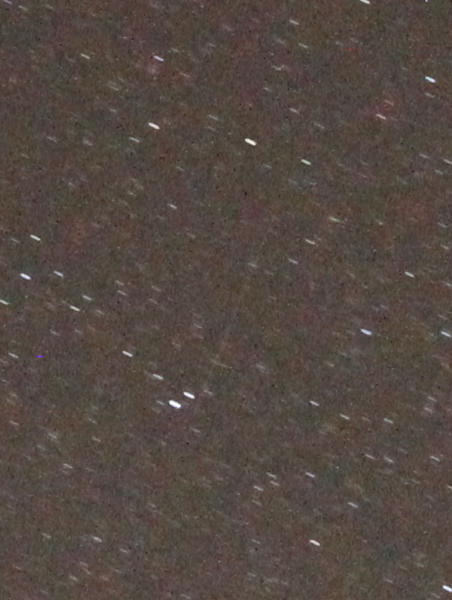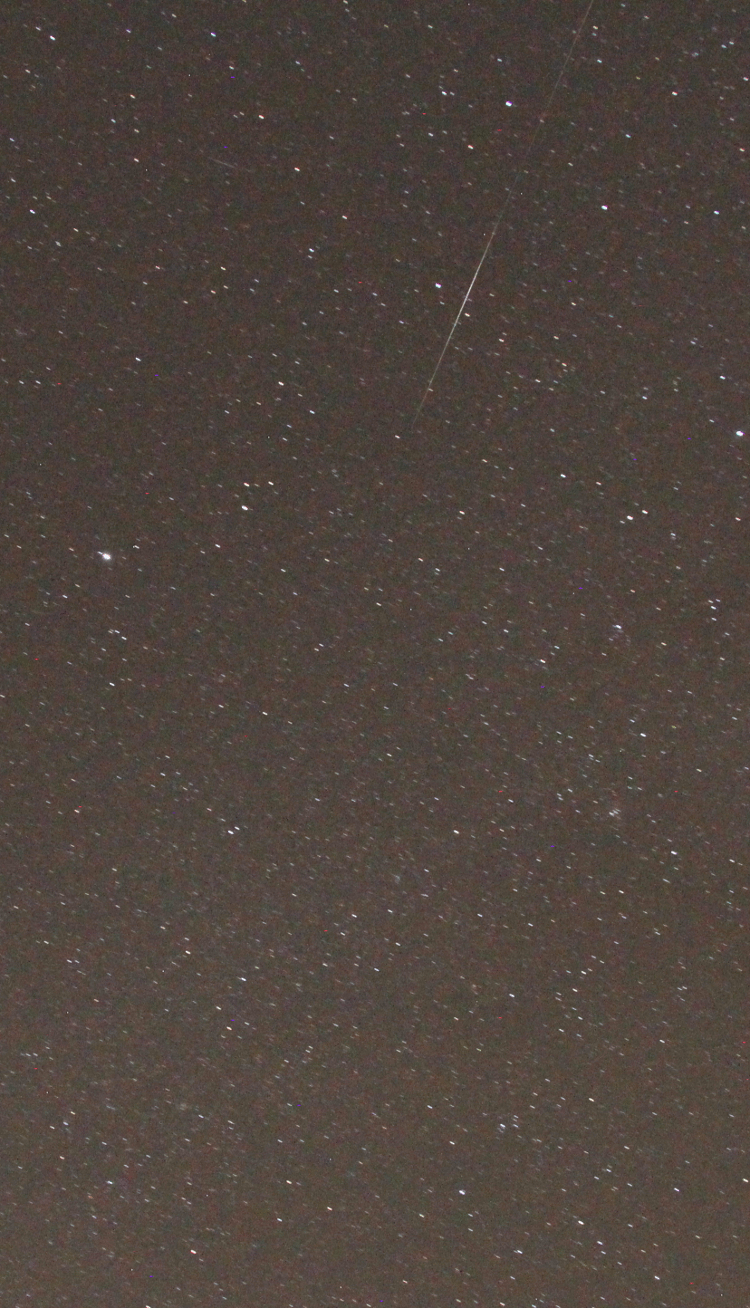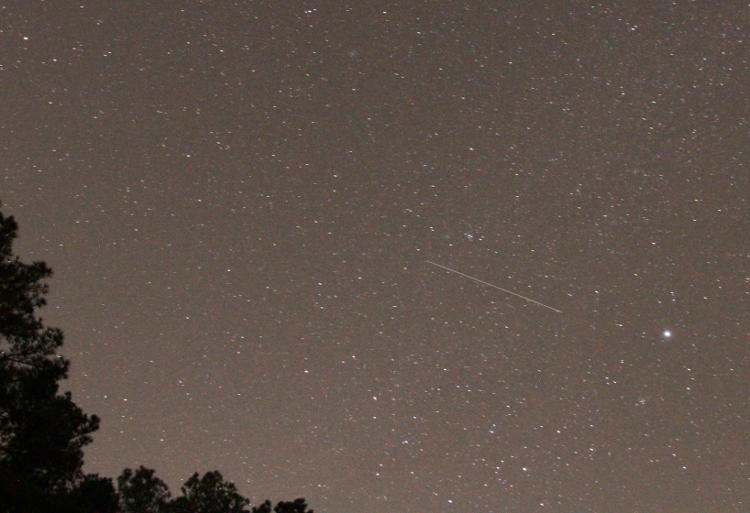Back on November 18th, I posted about going out early that morning to try and snag some of the Leonids meteor shower that was peaking then, and successfully capturing a couple. But a few days after that post as I was sorting the images, I looked closely at a few of them and realized that I was incorrect, in fact dead wrong, at least about a pair of them. They were pretty aligned, but not consecutive frames, and the frame in between didn’t show anything. Or so I initially thought.
 Very close examination of the frame between those two (this is full resolution here) revealed the faint trace of a passage, right in line with the two on either side. In other words, I didn’t catch a pair of meteors, I caught three frames of a much slower satellite passing along in a polar orbit. The change in brightness indicates that it was rotating or tumbling, catching the sunlight from its high altitude off of a variably reflective surface or angle. In fact, it even appears in the next two frames as well, but extremely faintly as it exits the frame.
Very close examination of the frame between those two (this is full resolution here) revealed the faint trace of a passage, right in line with the two on either side. In other words, I didn’t catch a pair of meteors, I caught three frames of a much slower satellite passing along in a polar orbit. The change in brightness indicates that it was rotating or tumbling, catching the sunlight from its high altitude off of a variably reflective surface or angle. In fact, it even appears in the next two frames as well, but extremely faintly as it exits the frame.
That’s not enough for me to illustrate effectively, of course, so I took the three frames and made an animated gif (pronounced, “zed”) from them. They had to be fairly large to even see the faint trace of the middle frame, and you’ll have to look closely.

It appears right in line with the others, though it seems I had a certain delay between the end of the first and the start of the second frame, much less so between the second and third. If it helps, look near the double star a little left and below center (these are HIP 34724 and HIP 34769, in the constellation Monoceros, while the bright star in the frame is Procyon.)
The movement of the stars isn’t evidence of my poorly aligning the frames, but their actual movement during that time, because the camera was on a tripod and firmly fixed, and I overlaid the complete frames before cropping. But unlike the first post, I can’t actually tell you which satellite this is, or even if it is one. Stellarium plots an awful lot of them, and you can even see them moving across the frame during the real-time displays, but this one hasn’t the faintest indication of being there.
There are a couple of reasons for this. One is that it’s actually some orbital debris, an unplotted bit of schmutz that split off from a launch or deployment. The other, more likely, is that it’s an Iridium satellite. Astronomers and enthusiasts from a decade or more ago know the Iridium series of defunct communication satellites, because they would produce brief and occasionally brilliant flares, even visible during the day, from their solar panels catching the right angle of the sun. The Iridium satellites are decaying in orbit now and are unpredictable due to atmospheric drag, so they’re no longer plotted – they’ll still be visible at times, but those times are variable and not tracked by astronomical software or websites. Most likely, they are tracked by military radar, keeping tabs on both any spy satellites and any debris that might pose a danger to other bodies in orbit, but that information isn’t readily available, if at all.
Now another bit of interest. Go back to that gif and look at the top left of the frame to see another satellite cruising across, right to left; this one isn’t plotted either. It starts to drive home how many things we have up there in orbit, because I was out there for just under an hour and caught an untold number of them, and right at the moment can’t even be sure that any streak that I captured is actually a meteor. I saw a pair, both outside of the camera’s angle of view, but do I have images of any? It seems more and more doubtful. And annoying.
But here’s something I didn’t post with the first, a satellite that I knew was there because I could see it moving, tracking slowly but perceptibly against the background stars, and I re-aimed the camera to capture part of its path.

Turns out this was the Hubble Space Telescope, which I’d made a couple of attempts to photograph before and failed because of conditions. The bright star nearby is Sirius, the brightest star in the sky (but still dimmer than several of the planets.)
Anyway, we can scratch this success off of my accomplishments, so maybe I’ll be out during the upcoming Geminids (peaking around the 13th) to try again. Sheesh.




















































